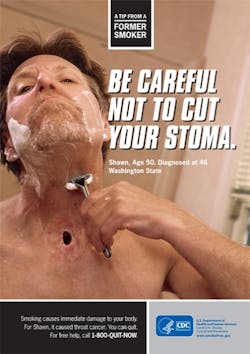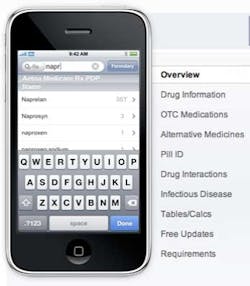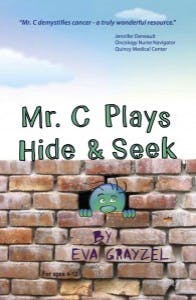Oral Cancer Awareness Month, part 2: Focus on prevention
Thanks to all the authors who contributed to this issue. The Brian Hill (Founder of the Oral Cancer Foundation) interview will be featured in a future issue. More than half of all cancer is preventable, according a new study.(1) The authors of this study outline barriers that prevent lessening the cancer burden in the United States and around the world. Because we have a vast amount of data about the causes and preventability of cancer, we need to implement the information we already know. See the feature on colon cancer prevention in this issue.According to the authors, lifestyle choices people make can be can go a long way to preventing cancer, such as tobacco use, diet, and exercise. The study cites data demonstrating that smoking alone is responsible for a third of all cancer cases in the United States. Excess body weight and obesity account for another 20 percent.(1) Beyond individual habits, society itself, from medical research funding to building design and food subsidies, influences the scope of cancer burden and can be changed to reduce it.
Eva now has a new book. "Mr. C Plays Hide & Seek," which helps children understand the life of cancer from the perspective of the "charming and personable" Mr. C himself.
Would you like to sneak a peek? Since April is Oral Cancer Awareness Month, Eva wants to gift her readers with a downloadable version. This gift expires on April 30th.(11) See page 19 about the dentist and the dental hygienist!
Eva is seeking companies that want to give the book as a gift with a personalized printed page. Hospitals, cancer centers, pharmaceuticals, large companies--for $3.95 per copy and a minimum order of 1,000, receive a personalized printed page at the front of each book, with company name, logo, and other information you wish to include.
Consider distributing this book to employees, patients, clients or customers. They will be touched by this unique, thoughtful gift. For inclusion in the first printing, orders need to be received by May 11th.
And last, but certainly not least, I would like to introduce Michele Howe Clarke, a young woman who fought a life and death battle with head and neck cancer that left her disfigured. Her book Face Forward: Meeting Challenges Head on in Times of Trouble is the truly inspiring story of someone who had happiness, a husband, a new baby, and a profession.
Nothing could have prepared her for this life changing event, yet she emerged alive, vibrant and victorious. Michele gracefully shares crucial insights on how we can all triumph over any challenge.(12) Read Michele’s moving and poignant article in this issue.
Thanks to all the contributors to this inspirational newsletter!
References
1. G. A. Colditz, K. Y. Wolin, S. Gehlert, Applying What We Know to Accelerate Cancer Prevention. Sci. Transl. Med. 4, 127rv4 (2012).
2. info.cancerresearchuk.org/cancerstats/types/oral/incidence/. Accessed April 2, 2012.
3. www.smokefree.gov. Accessed April 2, 2012.
4. Hamburg, M. Getting More Accurate Tobacco Information to Consumers. FDA Voice. blogs.fda.gov/fdavoice/index.php/2012/03/getting-more-accurate-tobacco-information-to-consumers/. Accessed April 2, 2012.
5. What Are You Smoking (or Chewing or Inhaling)? For Consumers. www.fda.gov/ForConsumers/ConsumerUpdates/ucm297878.htm. Accessed April 2, 2012.
6. Less Risky Tobacco Product? Only if the Science Says So. For Consumers. www.fda.gov/ForConsumers/ConsumerUpdates/ucm297895.htm. Accessed April 2, 2012.
7. Harmful and Potentially Harmful Constituents in Tobacco Products and Tobacco Smoke: Established List. www.fda.gov/TobaccoProducts/GuidanceComplianceRegulatoryInformation/ucm297786.htm. Accessed April 2, 2012.
8. Reporting Harmful and Potentially Harmful Constituents in Tobacco Products and Tobacco Smoke Under Section 904(a) (3) of the Federal Food, Drug, and Cosmetic Act: Guidance for Industry. www.fda.gov/TobaccoProducts/GuidanceComplianceRegulatoryInformation/ucm297752.htm. Accessed April 2, 2012.
9. Scientific Standards for Studies on Modified Risk Tobacco Products. www.iom.edu/Reports/2011/Scientific-Standards-for-Studies-on-Modified-Risk-Tobacco-Products.aspx. Accessed April 2, 2012.
10. www.talk4hope.com/Talk4Hope.com/Home.html.
11. www.evagrayzel.com/pdf/Mr_C_Plays_Hide_and_Seek_by_Eva_Grayzel.pdf.
12. faceforwardbook.com/.
Sincerely,
Maria Perno Goldie, RDH, MS
To read previous RDH eVillage FOCUS introductions by Editorial Director Maria Perno Goldie, go to introductions.







